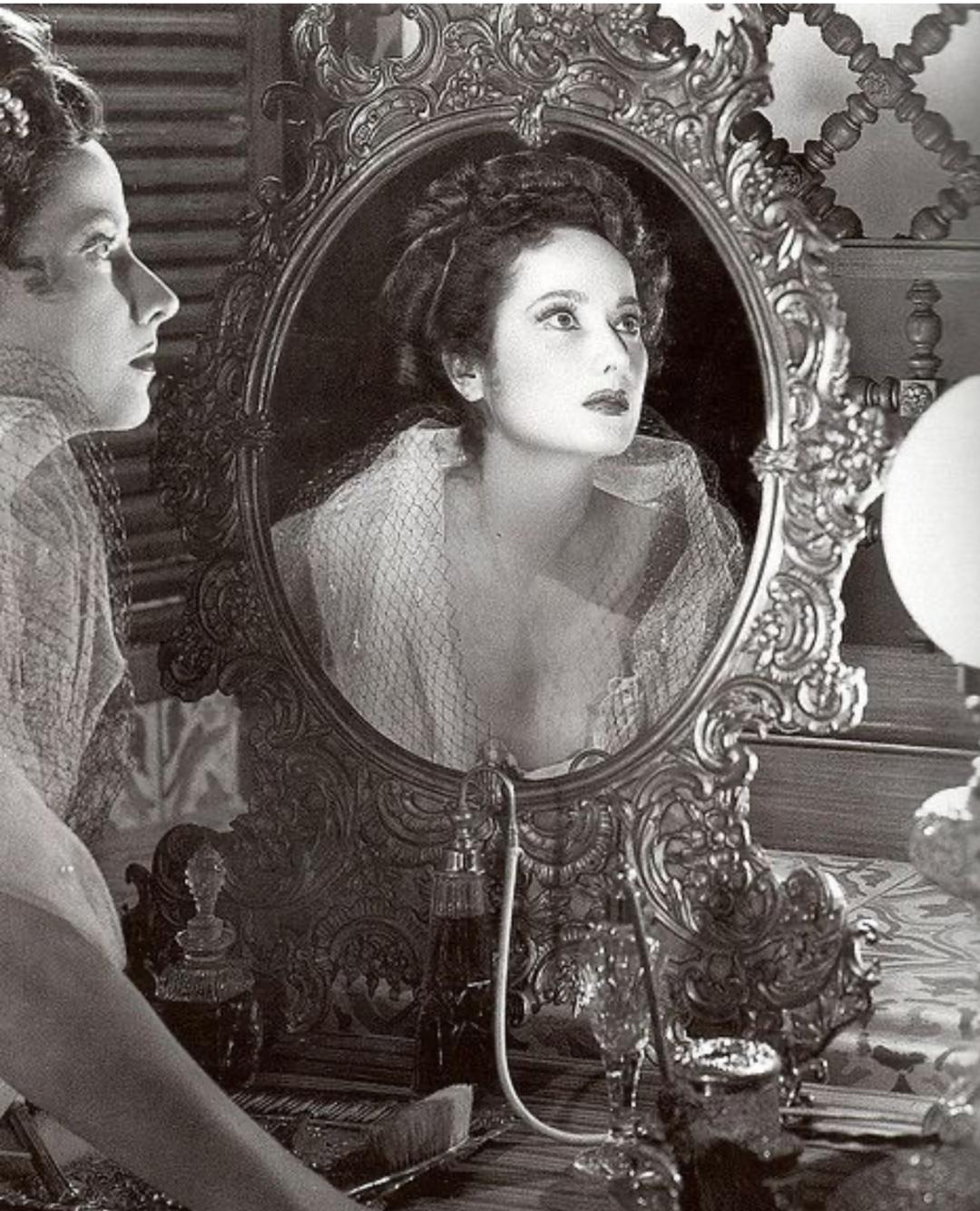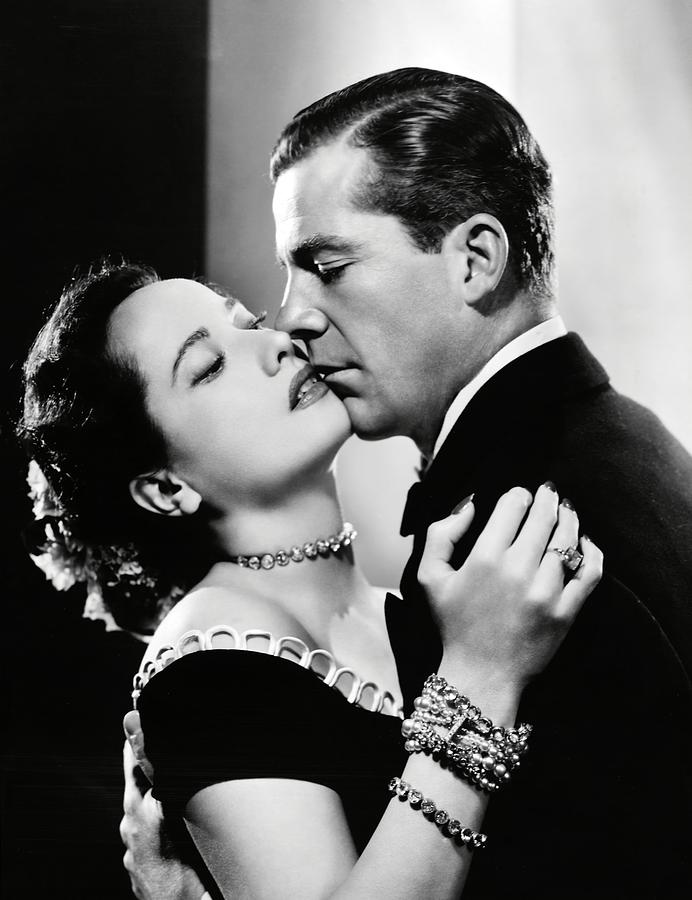
The gothic femme has had many celluloid idealizations. Off the top of my head, Vampira in Plan 9 From Outer Space, Carroll Borland in Mark of the Vampire, Winona Ryder in Beetlejuice & Fairuza Balk in The Craft all come to mind. My favorite morbid beauty may not be as obvious as those choices, but her classic countenance and illustriously macabre credits make her the ultimate queen of the creaky mansion in my cobweb strewn book.

This divinity is classic movie goddess Merle Oberon. In her multi-layered career, the singular Oberon not only enacted the tragic Cathy opposite Laurence Olivier in the idealized ’30s version of Wuthering Heights, but also faced down moustache twirling types in two popular films from 1944. Dark Waters found her amnesic heiress plunged into damp despair as a middle age grifter couple tries to kill her for her inheritance. Aligning with slightly brighter hues, her pertly happy Kitty Langley faced down Laird Cregar’s Jack the Ripper-like Mr. Slade in the fog strewn The Lodger.
Interestingly, even one of her more traditionally romantic pictures has a moody patina about it. 1948’s Night Song saw her Cathy Mallory, a distinguished society belle, pretending to be blind in order to lure a sightless composer, Dana Andrews’ bitter Dan Evans, into her heart. Of course, even in post-50s Hollywood, this must have seemed like an ignorant screenwriting choice. Still, Andrews and Oberon give their characters a bit of regal undercurrent, especially as Evans discovers Mallory’s deception and, forgivingly, offers his affections to her in the final moments.

Adding a slight scent of danger to her celluloid allure, Oberon also enacted variations on the noir baddie. Deliciously conniving in 1946’s Temptation, she proved even deadlier ten years later as the seemingly innocent Jessica Warren in Universal Picture’s pulpy The Price of Fear.
Her own life story, though, may be the most tragic component of her artistry. A bi-racial child of rape, she hid her Asian ancestry in order to find success in Hollywood – a fact that only come out after her death from a stroke in November of 1979. The moody internal trauma this denial must have caused her adds to the texture of her celluloid legacy. The sorrow she embodied shows in her greatest performances, a lasting gift to movie lovers everywhere.

Until the next time, SWEET love and pink GRUE, Big Gay Horror Fan!